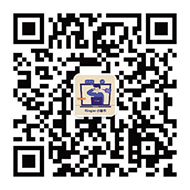
Understanding Measurement Uncertainty
Measurement uncertainty in 3D metrology refers to the potential deviation between the measured value and the true value of a physical object. It arises from various factors, including equipment limitations, operator technique, and environmental influences.
Essentially, uncertainty reflects the repeatability error—how much successive measurements of the same object under identical conditions may vary. Uncertainty affects not only the precision of engineering design and product development but also impacts critical decisions in quality control and scientific research.
To maintain rigorous standards—particularly in demanding sectors like automotive and aerospace—it's vital to evaluate, quantify, and reduce these uncertainties.
Real-World Example: How Uncertainty Affects Quality Control
Consider measuring the diameter of a small metal rod with a caliper. While the rod's true diameter might be 5.00 mm, your caliper could yield results ranging from 4.92mm to 5.08mm due to its precision limits and the way you handle the tool. In this case, the reported measurement might be (5.00 ± 0.08) mm.
If a component has a tight tolerance—say, ±0.08 mm—then a tool with this level of uncertainty would not be suitable for the task. This example illustrates why understanding and controlling measurement uncertainty is crucial to ensuring reliable production.
Industry Standards for Quantifying Measurement Uncertainty
To ensure measurement reliability, metrology standards require that the uncertainty of a measurement system be at least four times smaller than the tolerance interval. In some high-precision applications, this ratio may extend to a factor of 10.
For instance, if a part has a tolerance range of 0.8 mm (e.g., 51.0 ± 0.4 mm), the measurement system must have an uncertainty of less than 0.2 mm. Such standards are critical to maintaining precision in industries where product quality cannot be compromised.
Errors vs. Uncertainty in Metrology
Errors and uncertainty are often confused but represent distinct concepts in metrology.
- Errors refer to known deviations from the true value. These are often correctable once identified.
- Uncertainty, on the other hand, represents the range of doubt associated with a measurement and accounts for all unknown or uncontrollable variables. It cannot be eliminated but must be quantified and communicated.
Minimising errors involves precise instruments and procedures, while managing uncertainty requires a comprehensive understanding of contributing factors.
Sources of Measurement Uncertainty in 3D Metrology
1. Instrumental Uncertainty: Equipment limitations—such as geometric deviations, calibration drift, and sensor noise—can impact measurement accuracy. Instruments that lack proper calibration or have not been tested against industry benchmarks may yield unreliable results.
2. Environmental Conditions: Temperature changes, humidity, and vibration can significantly affect 3D measurements. For example, large parts are often measured on the shop floor rather than in climate-controlled metrology labs, introducing additional instability. Even slight temperature shifts can cause materials and measuring equipment to expand or contract, distorting results.
3. Operator Influence: Human error remains a major contributor to measurement uncertainty. Inconsistent handling, improper setups, and data misinterpretation often stem from insufficient training or poor process planning. Inexperienced operators may fail to prepare proper measuring arrangements, resulting in wasted time, defective parts, or lost resources.
4. Software Algorithm Variability: Different metrology software solutions may use unique algorithms to process the same raw data, leading to inconsistent outcomes. Elements like point cloud filtering, data alignment, and noise reduction can introduce variability. In industries such as aerospace, where precision is paramount, using reliable, validated software is essential.
Practical Methods to Reduce Measurement Uncertainty
• Regular Calibration: Calibration aligns instruments with traceable standards, ensuring measurements remain accurate over time. For 3D scanners, calibration involves fine-tuning laser parameters; for measuring arms, it means defining precise arm geometry to locate the probe tip. Routine calibration enhances confidence in data quality.
• Environmental Control: Maintaining a stable measurement environment is essential. Using climate-controlled rooms, anti-vibration systems, and proper isolation methods helps eliminate external variables that compromise accuracy.
• Operator Training: Thorough training equips operators with the skills to correctly set up and execute measurements. Well-trained technicians can also pre-program inspection routines, reducing manual intervention and human error during routine checks.
• Advanced Software Compensation: Modern metrology software can apply corrections for factors such as thermal drift or material deformation. These tools also integrate CAD models, real-time visualisations, and automated reporting to ensure streamlined, high-accuracy workflows.
Best Practices for Reliable 3D Measurements
• Use ISO-Certified Equipment: Industry-recognised standards such as ISO 10360-08 (for scanners) and ISO 10360-12 (for articulated arms) provide assurance of measurement performance. Equipment certified under these standards has undergone rigorous validation, making it suitable for high-precision applications.
• Consistent Documentation: Recording every aspect of the measurement process—from environmental conditions to software settings—enables traceability and helps identify recurring sources of uncertainty.
• Routine Maintenance and Audits: Preventive maintenance preserves equipment performance. Peer reviews and process audits add a layer of quality assurance, ensuring that even overlooked issues are caught and corrected.
Kreon: A Trusted Partner in 3D Metrology
Kreon provides cutting-edge 3D measurement solutions tailored to reduce uncertainty and improve quality. Its flagship systems, such as the Onyx Skyline and Ace Skyline, combine tactile probing with high-resolution laser scanning. Kreon arms feature built-in temperature sensors to dynamically compensate for environmental changes, ensuring consistent accuracy.
The Zephyr III, a metrology-grade scanner compatible with CMMs, delivers precision down to 5 µm—ideal for demanding applications in automotive and aerospace sectors.
All Kreon solutions are ISO-compliant and designed to integrate seamlessly into advanced quality control workflows, delivering reliable data for improved decision-making and reduced production errors.
Conclusion
Measurement uncertainty in 3D metrology arises from a combination of equipment limitations, environmental variables, operator inconsistencies, and software processing. However, with the right strategy—regular calibration, environmental management, robust training, ISO-compliant equipment, and advanced software—these uncertainties can be significantly minimised.
By adopting best practices and investing in high-performance solutions like those from Kreon, manufacturers can ensure the highest levels of accuracy and quality in their 3D measurement processes—supporting innovation, compliance, and long-term success.
Source: Kreon

 iConnectHub
iConnectHub
 Login/Register
Login/Register Supplier Login
Supplier Login


























